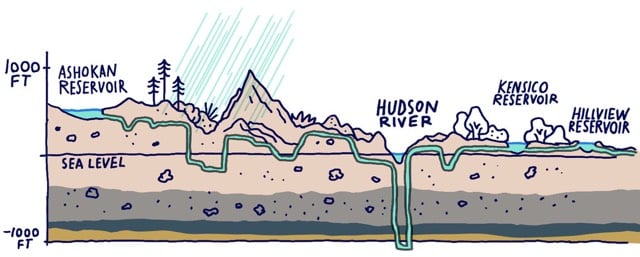How NYC gets its water
NYC water tastes amazing. Better than bottled. Where does the city get such great water from?
The Catskill/Delaware watershed, which extends 125 miles northwest of the city, provides more than 90 percent of the city’s supply. The rest comes from the Croton watershed.

It can take 12 weeks to a year for water to wind its way to the city from the streams, tunnels, dams and reservoirs in the Catskills. All of it is delivered to the city by gravity alone.
“Gravity’s an important friend of ours,” said Mr. Rush, the deputy commissioner, explaining that it “works nonstop” and is “energy efficient.”
Whoa, I had no idea the aqueduct tunneled 1000 feet under the Hudson River. Water systems have been in the news lately, both in Flint, MI and here in NYC, where Mayor de Blasio postponed work on Water Tunnel #3 and then, a day later, responding to public concern over the postponement, announced that he was going to accelerate the work on Tunnel #3.
See also David Grann’s classic 2003 New Yorker piece about the NYC water system, City of Water.
The author accompanied a group of sandhogs and nine cases of dynamite six hundred feet down a shaft leading to a segment of the tunnel that lies below Tenth Ave. and 13th St. New York’s invisible underground empire goes as deep as the Chrysler building is high. Tunnel No. 3 has been under construction since 1969; it will extend sixty miles, from the reservoir in Yonkers to the end of Manhattan, with various redundant loops.





Stay Connected